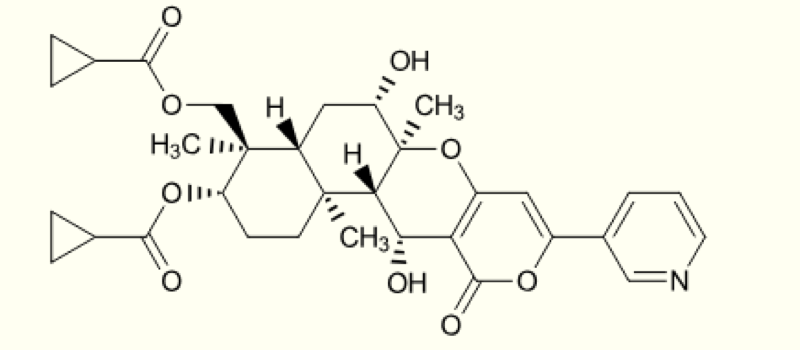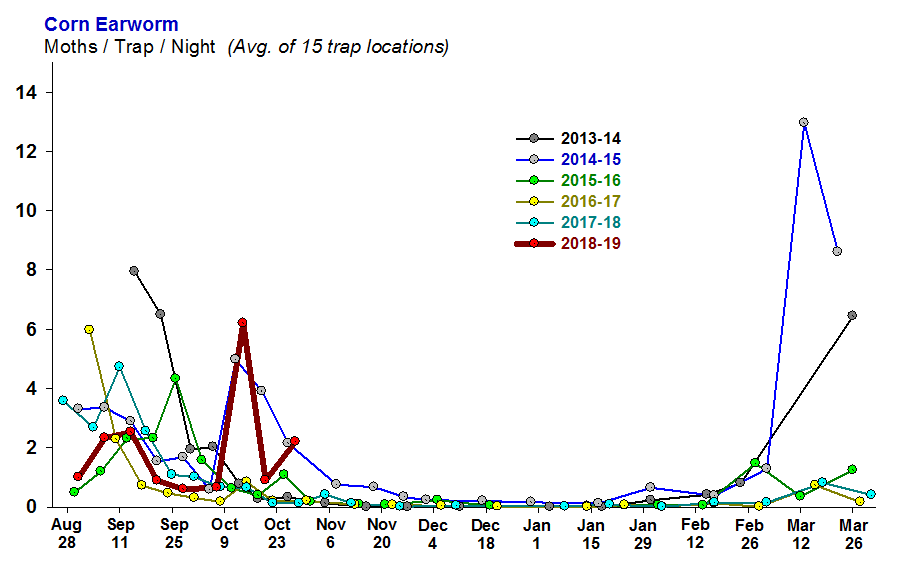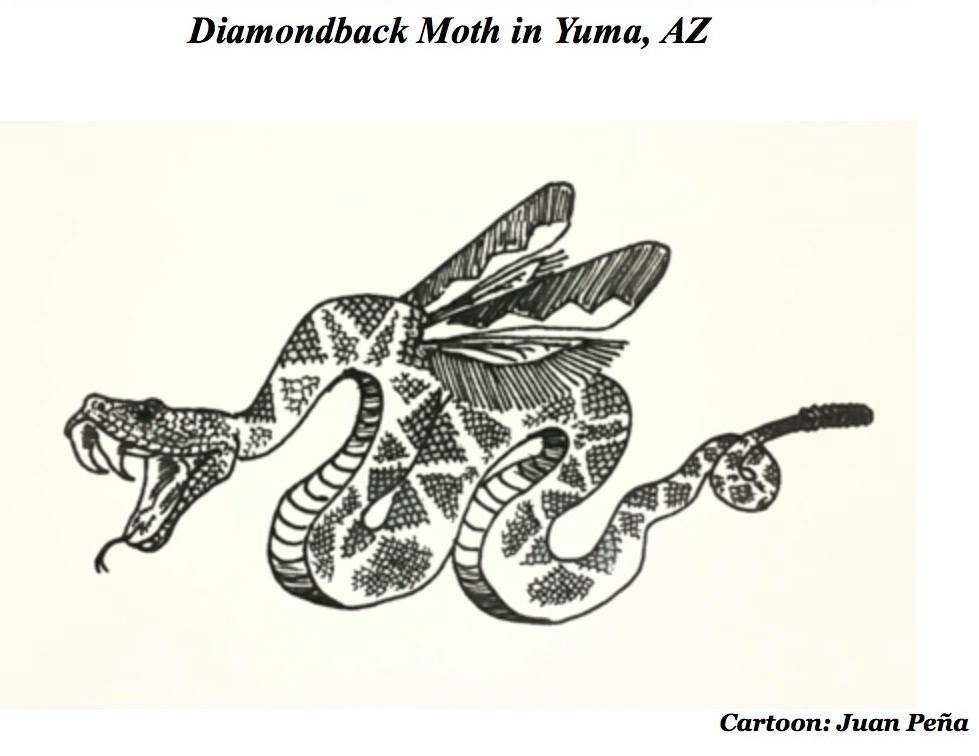Every fall about this time we begin to think how unusual the produce season has
been compared to previous years. And of course, every season is different. That’s
the complicated nature of desert agriculture and insect pest management; so many
abiotic and biotic factors influence plant growth and insect activity. This year
is no different and here are a few observations I have so far based on field observations,
PCA reports and areawide insect trapping over the past 6 years (see
Insect Trapping Trends– 6 Year Avg).
Whitefly populations have been very light this year. Areawide trapping
shows that whitefly counts are the lowest we’ve seen in 6 years. Whitefly flights
we used to see during September just didn’t occur this year. The relatively light
virus seen on the fall melons out east is another indicator. Populations have been
so light on the experiment station that we are having difficulty starting whitefly
trials in broccoli. Of course, there are some high numbers in localized areas based
on PCA reports. Beet armyworm pressure started strong in early
September, but decreased significantly following the remnants of Hurricane Rosa
and Sergio, and the break in weather. This is reflected in trap counts compared
with previous seasons. However, I have recently seen an increase in egg masses consistent
with the warmer weather. Cabbage looper numbers have similarly
been considerably lower from what we typically see in lettuce and cole crops in
October and again, trap counts support this observation. Corn earworm adult trap
counts however have been as high as we’ve seen in 6 years (see Graph below). This
is important since the last time we saw trap counts this high (fall 2014), earworm
larvae were common in the head lettuce fields harvested in November. Furthermore,
I’ve had a few reports of occasional earworm larvae showing up in lettuce. Be careful
with this one. The good news is that when the weather finally breaks, we should
a marked decreased in worm pressure. Diamondback moth trap counts
are lower this year overall, but did tend to increase following the recent storms
(see DBM Trap Network).
Larval numbers are light in our broccoli trials, and have had very few reports of
larvae infesting commercial fields. To date, most reports of DBM larvae in fields
are occurring in transplants. Keep in mind though, DBM can complete a life cycle
(egg-adult) in a bout 2 weeks with temperatures we’re presently experiencing.
Western flower thrips have also been unusually light this fall. The
cooler weather and earlier rain in early October likely had a negative impact on
population growth, but now thrips appear are on the increase, consistent with the
warm weather and drier conditions. Adult and immatures are increasing on my lettuce
plots, and several PCAs have mentioned that they are becoming abundant. Bean
thrips are also showing up, albiet in lighter numbers than the previous
2 fall season. Aphid colonies are beginning to show up in brassica
crops in some areas, and we are finding winged aphids showing up on small seedlings
at YAC. Aphid trap counts have been low, but with the lush desert and winds from
the N-NW, would anticipate aphid flights to begin picking up in the next few weeks
as they typically do.
Name that Compound
 Afidopyropen
Afidopyropen
Areawide Diamondback Moth Trapping Network
In response to the recent outbreaks of Diamondback moth (DBM) , Plutella xylostella
in Yuma, we have established a pheromone trap network designed to monitor the activity
and movement of adult populations of DBM. PCAs have had difficulty controlling DBM
in cabbage, broccoli and cauliflower since October. Traps have been placed in Roll,
Wellton, Dome Valley, Gila Valley and Yuma Valley in locations where cole crops
are presently being grown or in areas where infestations were known to occur this
fall.
Click here to see results of DBM pheromone trap network.
Remember, When in Doubt . . . . . “SCOUT”

|





